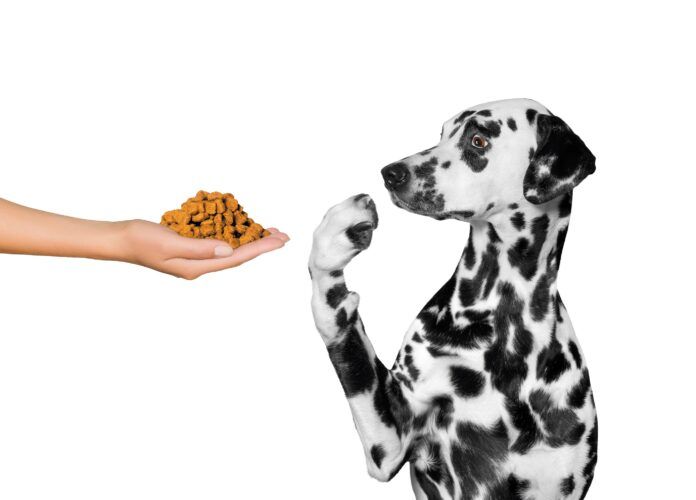We tend to think of felines as the pets who turn up their noses at food, but certain dogs also present feeding challenges. As you might expect, picky canine eaters are sometimes too thin, and it is our responsibility to make sure they take in enough calories to stay healthy. Sometimes, however, dogs who are picky eaters are actually overweight; they’re the canine version of the cake-and-cookies crowd. They want only what tastes rich and are unwilling to eat the more nutritious, lower-calorie food that’s good for them. Herewith, the two categories of picky eaters and how to help them adjust their palates.
Dogs who are too thin
“Too skinny” is not usually a problem in the canine world. In fact, more than 40 percent of our dogs are estimated to be overweight. It’s such a large proportion of our pets that it can skew our perception of what “too skinny” actually is. So before you decide your dog is pencil-thin and needs to pack on some pounds, ask your veterinarian to make a professional assessment. What you perceive as too thin may be just right.
That said, certain breeds do eat to live rather than live to eat, including greyhounds and poodles, “and you may have to watch with them if they’re taking in too few calories,” says Tufts veterinary nutritionist Deborah Linder, DVM.
Solutions: If it turns out your dog truly is underweight, it’s okay to let your nurturing instinct kick into high gear and see what you can do to get your pet to eat more. With that in mind:
1. Take advantage of the fact that dog food comes not just in many different flavors but also in many different forms. For example, wet foods can be stews, pates, loaves, shreds, or chunks. Textures and shapes vary for dry foods, too, from doughnuts to stars and pyramids. Try different types of foods, and keep a diary to clearly ascertain your dog’s preferences.
2. Enhance (carefully) your dog’s diet with people food. No more than 10 percent of his diet should come from foods outside of the balanced dog food you feed him, but certain flavor boosters can fit pretty easily, if you consider that a 40-pound dog requires about 750 calories a day. Choices include a quarter cup of chopped chicken breast (50 calories); a quarter cup of low-fat and no-salt-added cottage cheese (also 50 calories); or a tablespoon of honey or maple syrup (60 calories). Clear all people foods with the vet before offering them. And offer them before your dog turns up his nose at the dog food they’re garnishing rather than offering them as a “reward” for eating those foods.
3. Check your stress at the door. That’s right. Just like people, dogs lose their appetites when people are yelling, angry, or out of sorts.
4. Don’t over-emphasize your dog’s eating habits. Dogs sense when we feel anxious about their food intake, and that anxiety can spill over and dampen their appetite.
Picky but overweight
You know the type. They have no use for the nutritious kibble you put in their bowl but will gladly take bits of steak gristle or vanilla frosting — calorie-dense goodies with little nutritional value. No wonder they tip the scales at the doctor’s office.
The thing is, people sometimes inadvertently train their dogs to hold out for the rich foods. They give people food as a treat, and then the dog won’t eat his balanced dog food, so they keep trying different “goodies,” often putting them right on top of the kibble. The dog then learns quickly that if he waits a little or acts disinterested initially, his “mom” or “dad” will “sweeten” the deal!
Solution. “Hold a little firm,” Dr. Linder advises.
1. Hold your ground for a couple of meals and put out the kibble and nothing else. Your overweight dog will not fade away. He will eat when he gets good and hungry enough.
2. Keep in mind that you are not punishing your dog and should not show anger or frustration. Rather, just as you would for a child who would prefer nothing but lollipops and cookies for dinner, you are staying calm and nonchalant so that your loved one will remain healthy. 





